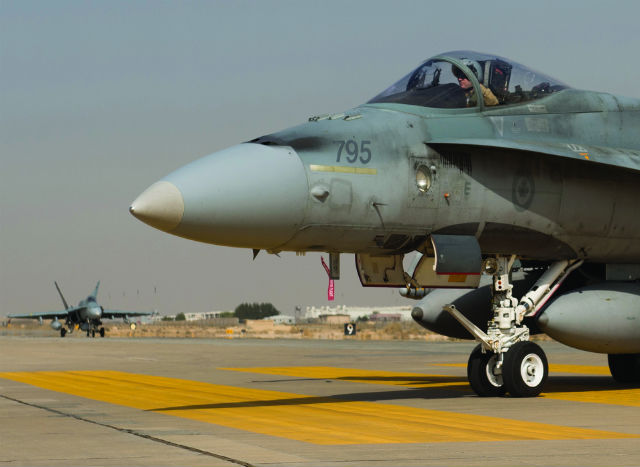Canada is world-renowned for its ice hockey players and maple syrup, but the government’s shambolic defence procurement system has also gained an international notoriety.
The nation is decades late with replacing vital assets like the de Havilland Canada Buffalo and Sikorsky Sea King, and its new Liberal government’s intended exit from the Lockheed Martin F-35 programme has prompted concerns that its Boeing CF-18 fighters could suffer a similar wait.
Prime Minister Justin Trudeau pledged during his election campaign to ditch the F-35, which would take a large portion of the budget, and to quickly launch a competitive selection for an alternative; a move that could see the process advance after years of stagnation.

Replacement coming soon?
Canadian Department of National Defence
If Trudeau makes a clean and decisive break from the F-35 and enters straight into a competitive selection, it could be possible to have a less costly replacement such as the Boeing F/A-18E/F Super Hornet or Dassault Rafale on the runway in relatively short order.
The break-up would spell trouble for local suppliers like Avcorp and Magellan Aerospace, who produce outboard wings and horizontal tail assemblies for the Lightning II. But some analysts argue that axeing the F-35 procurement could free up Canada politically and financially to invest in other capabilities for the Artic patrol and NORAD missions, such as airborne early warning and control system aircraft and unmanned air vehicles. Such off-the-shelf platforms would make Canada a more self-reliant and valuable NATO partner and ally, they contend.
The truth is, the outgoing Harper government took too long on the F-35 and implemented a painful review process in 2012 that experts say already put Canadian industry at a disadvantage. Suppliers have captured upwards of $640 million in contracts, and Industry Canada forecasts another $10 billion in opportunities tied to the Joint Strike Fighter if Ottawa stays with the project. But industrial participation has never been the priority. The question is whether Canada should ditch the “Cadillac option” and go with a trusty Ford.
The incoming government wants a homeland defence asset, and not a “first day of the War” stealth fighter. With Russia and China scaling up their activities in the Artic region, and Russian nuclear-capable bombers regularly probing near US and Canadian airspace, Ottawa cannot delay further with replacing the CF-18, or its credibility in the region will be called further into question.
Source: Flight International






















